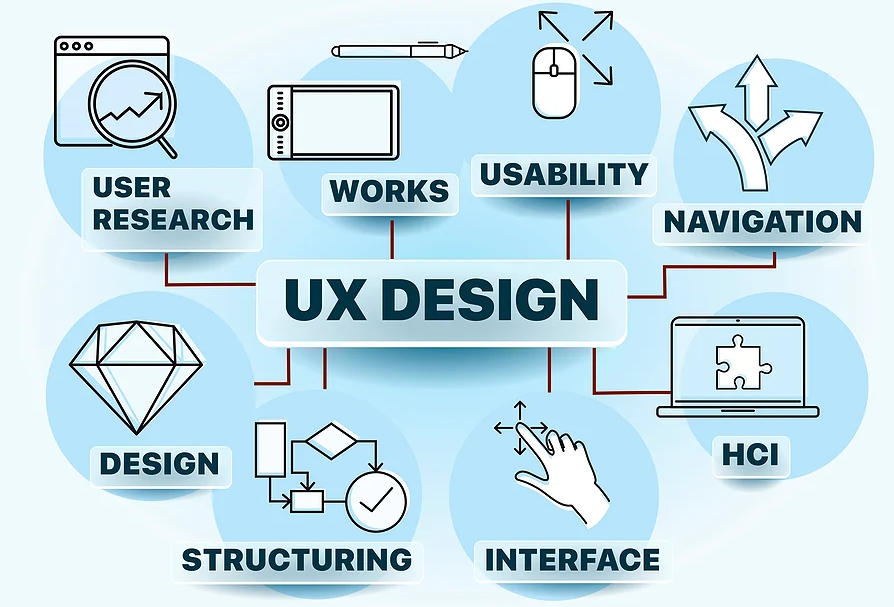
User Experience (UX) design plays a pivotal role in creating digital interfaces that are intuitive, efficient, and delightful. This article delves into the world of UX design, highlighting its significance in shaping user interactions and satisfaction.
UX design revolves around understanding user behavior, needs, and goals to create digital experiences that are seamless and user-centric. Key components of UX design include:
User Research: UX designers conduct extensive research to gain insights into user preferences, pain points, and behaviors. This informs design decisions and ensures that the final product aligns with user expectations.
Information Architecture: Organizing content and navigation logically to provide a clear and intuitive user journey. Effective information architecture simplifies users' interactions and improves their experience.
Wireframing and Prototyping: Creating wireframes and prototypes allows designers to visualize and test the user journey before finalizing the design. It's an iterative process that identifies and resolves issues early.
Usability Testing: User testing is an integral part of UX design. It involves observing users as they interact with the product to identify usability issues and gather feedback for improvements.
UX designers strive to make interactions as efficient as possible, ensuring that users can achieve their goals with minimal effort. This involves optimizing workflows, minimizing cognitive load, and providing clear paths to desired outcomes.
Moreover, UX design embraces empathy by considering the emotional aspects of user interactions. A positive emotional experience can lead to user satisfaction and loyalty, making empathy a vital component of UX design.
Inclusive design is at the heart of UX design. Ensuring that digital experiences are accessible to all users, including those with disabilities, is a fundamental principle. Designing with accessibility in mind ensures that everyone can benefit from and enjoy digital products.
Exceptional UX design can yield profound impacts:
User Satisfaction: Thoughtfully designed user experiences lead to higher user satisfaction, increasing user retention and loyalty.
Efficiency: Streamlined and efficient interactions save users time and effort, resulting in a more enjoyable and productive experience.
Reduced Abandonment: A well-designed user journey reduces the likelihood of users abandoning a product or task due to frustration.
Brand Reputation: Positive user experiences enhance a brand's reputation and foster trust among users.
UX design is the driving force behind digital experiences that are not only efficient but also emotionally engaging. By deeply understanding user needs and behaviors, UX designers craft interfaces that simplify interactions, improve efficiency, and elevate user satisfaction. In an increasingly digital world, UX design is the compass that guides us towards meaningful, intuitive, and inclusive digital interactions.